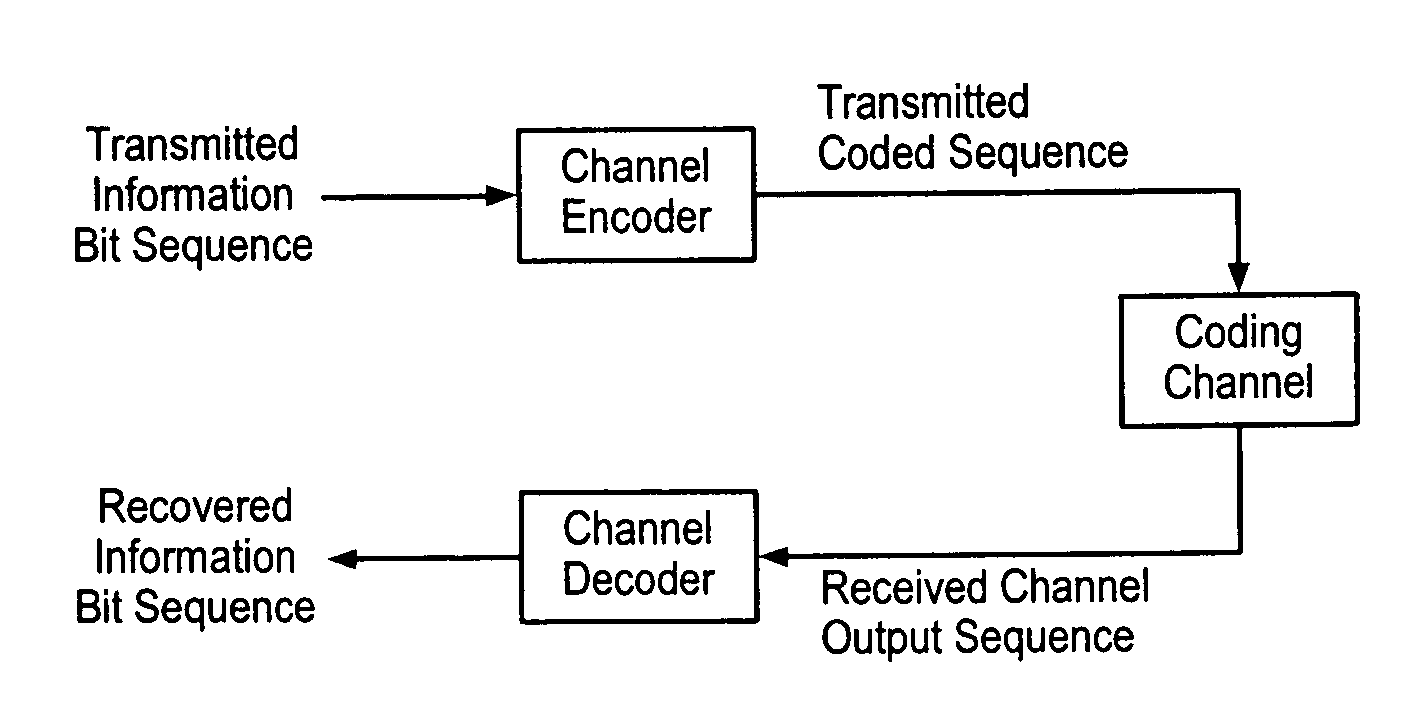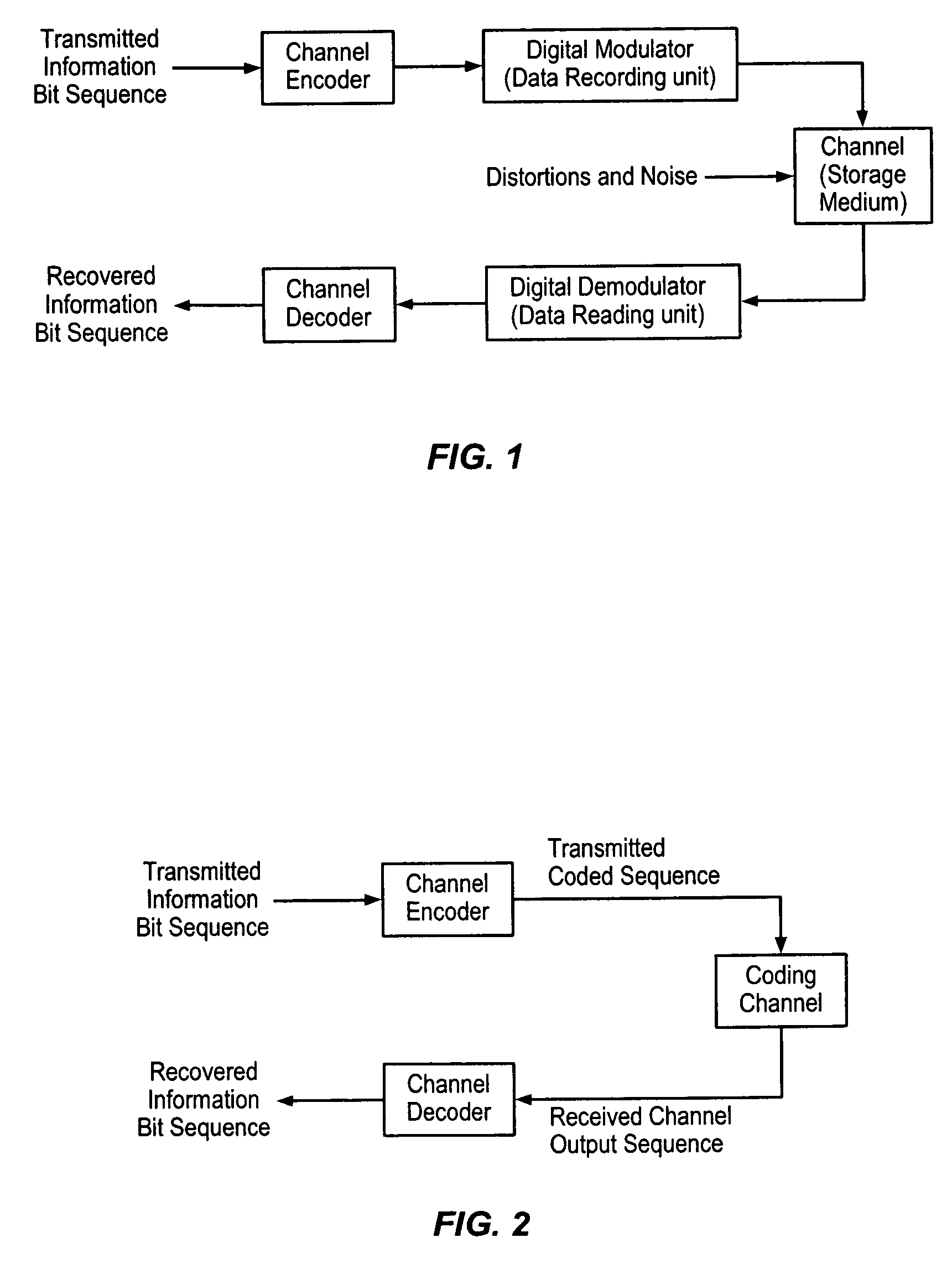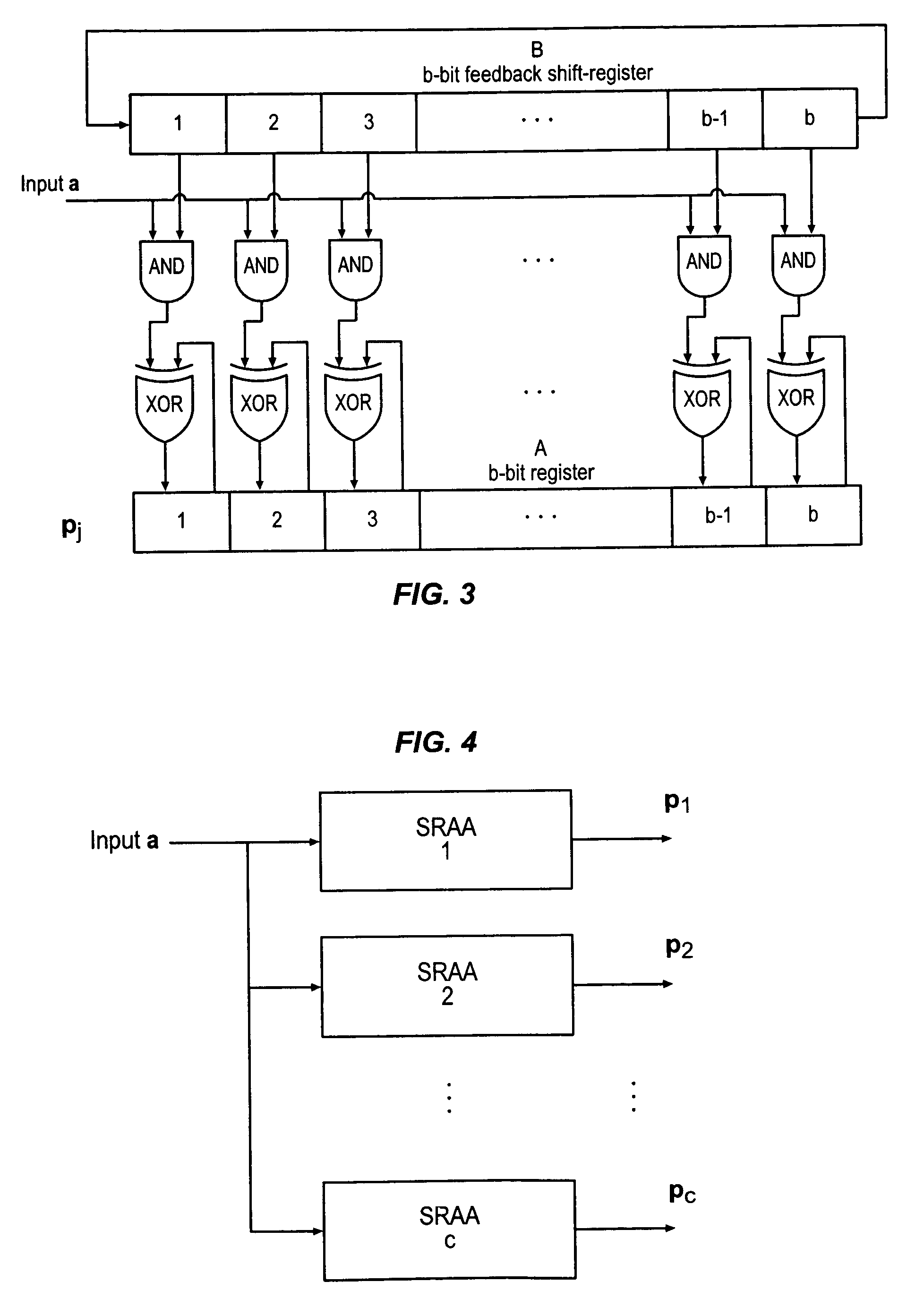Universal error control coding system for digital communication and data storage systems
a technology of error control and data storage system, applied in the field of data error control coding, can solve the problems of errors in the recovered information, signals conveying information, information always subject to corruption, etc., and achieve the effect of reducing complexity, chip power consumption, and chip area
- Summary
- Abstract
- Description
- Claims
- Application Information
AI Technical Summary
Benefits of technology
Problems solved by technology
Method used
Image
Examples
example 1
[0053]Consider the parity check matrix:
[0054]H=[100100100010010010001001001100010001010001100001100010]
[0055]The rank of this parity check matrix H=5. So the null space of H is a (9,4) linear code.
[0056]If all the columns (or all the rows) of the parity check matrix H do not have the same weight, the code is called an irregular Low Density Parity Check code. The lack of structure in irregular Low Density Parity Check codes results in complex encoder implementations, which reduces their desirability for many applications.
Binary Quasi-Cyclic Low Density Parity Check Codes
[0057]Cyclic codes have the property that the cyclic shift of any codeword by any number of bit positions results in another codeword. This property allows easy implementations of channel encoders and syndrome calculations for channel decoding by employing shift registers with feedback connections. Many important cyclic codes, including BCH codes and Reed Solomon codes, have a rich algebraic structure that allows for ...
example 2
[0065]Consider a case where c=3 and t=4 and c1=2 and t1=3. Suppose the parity check matrix of the base code is the following 3×4 array of 3×3 circulants:
[0066]H(3,4)=[001100010000000000100010001010001100010001100100010001000000000001100010100010001010001100001100010000000000]
and the parity check matrix derived by deleting the last row and the last column of 3×3 circulants from H(3,4) is:
[0067]H(2,3)=[001100010000000000100010001010001100100010001000000000]
Both binary Quasi-Cyclic Low Density Parity Check codes are regular with equal column and row weights. The parity check matrix H(3,4) has rank 7, so its null space is a (12,5) code C(3,4) of code rate equal to 5 / 12, while the parity check matrix H(2,3) is of full rank 6, so its null space is a (9,3) code C(2,3) of code rate equal to ⅓.
Efficient Channel Encoder Implementations for Binary Quasi-Cyclic Low Density Parity Check Codes
[0068]Although a binary Quasi-Cyclic Low Density Parity Check code is specified as the null space of a ...
example 3
[0125]Consider a sample binary linear code with parity check matrix:
[0126]H=[111101110100011][0127]The Tanner Graph is shown in FIG. 8. The variable (or codeword) nodes in this Tanner Graph correspond to the codeword bits and are represented by the circles labeled v1, . . . , v5. The check-sum nodes correspond to the rows of the parity check matrix and are represented by the circles labeled c1, c2, c3.
[0128]A cycle in a graph of vertices and edges is defined as a sequence of connected edges that starts from a vertex and ends at the same vertex, and satisfies the condition that no vertex (except the initial and the final vertex) appears more than once. The number of edges on a cycle is called the length of the cycle. The length of the shortest cycle in a graph is called the girth of the graph. The Tanner Graph of a linear block code contains no cycles of length 2 and no cycles of odd lengths. Therefore, the girth of the Tanner Graph of a linear block code is at least 4.
[0129]The erro...
PUM
 Login to View More
Login to View More Abstract
Description
Claims
Application Information
 Login to View More
Login to View More - R&D
- Intellectual Property
- Life Sciences
- Materials
- Tech Scout
- Unparalleled Data Quality
- Higher Quality Content
- 60% Fewer Hallucinations
Browse by: Latest US Patents, China's latest patents, Technical Efficacy Thesaurus, Application Domain, Technology Topic, Popular Technical Reports.
© 2025 PatSnap. All rights reserved.Legal|Privacy policy|Modern Slavery Act Transparency Statement|Sitemap|About US| Contact US: help@patsnap.com



